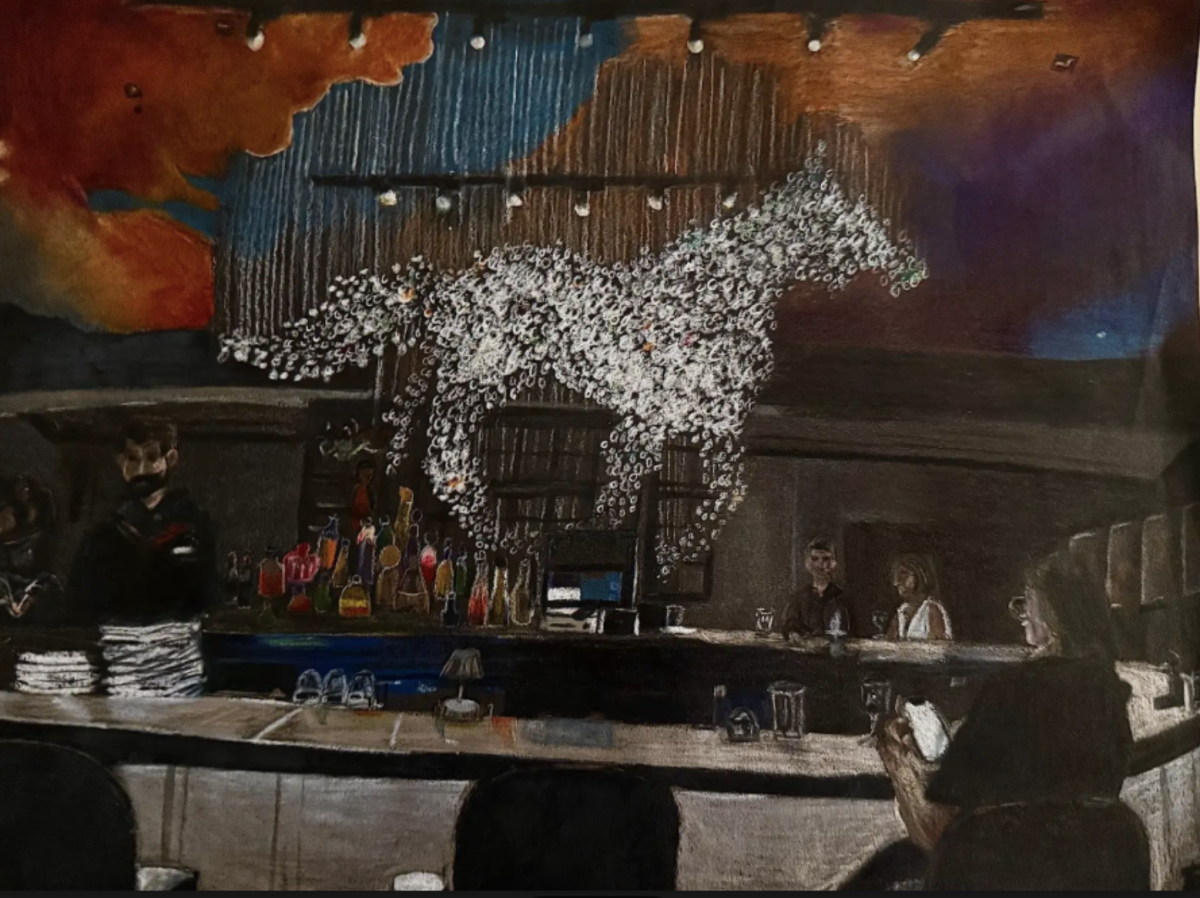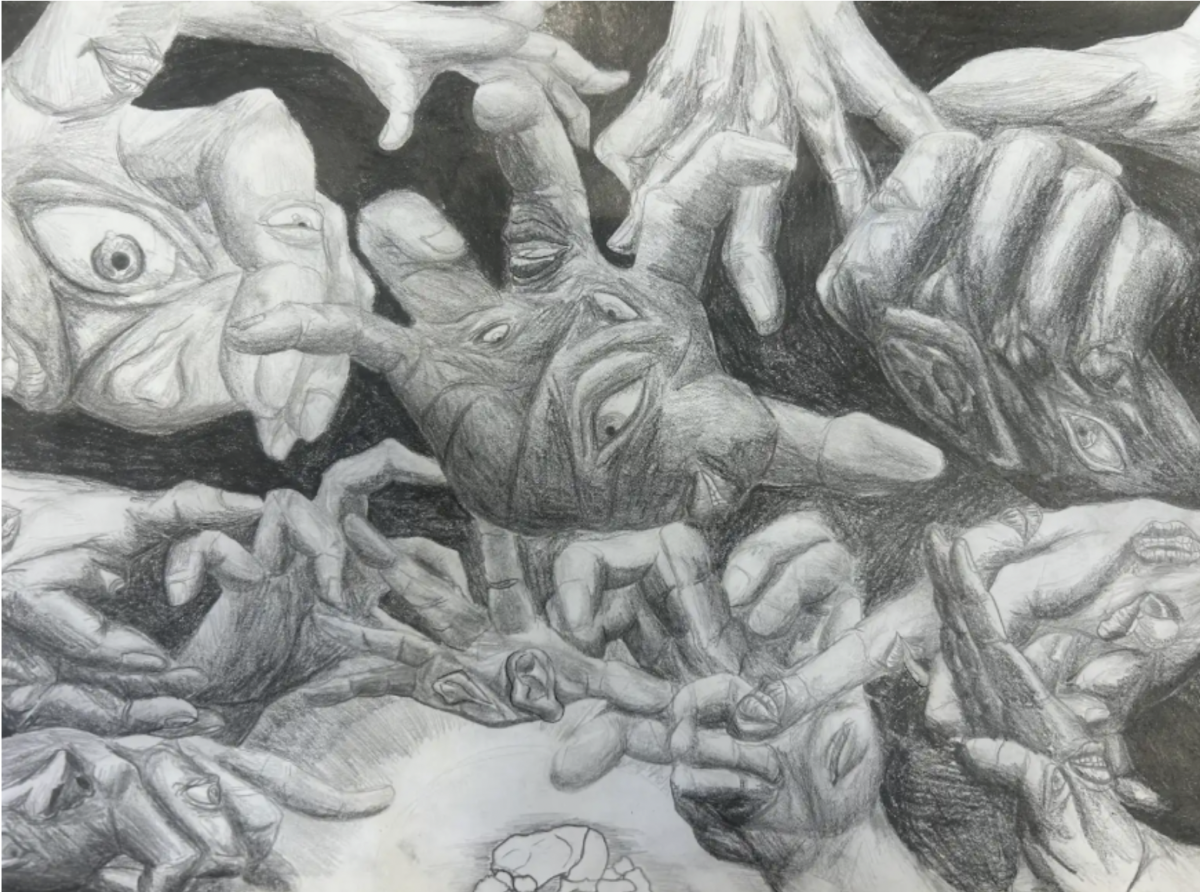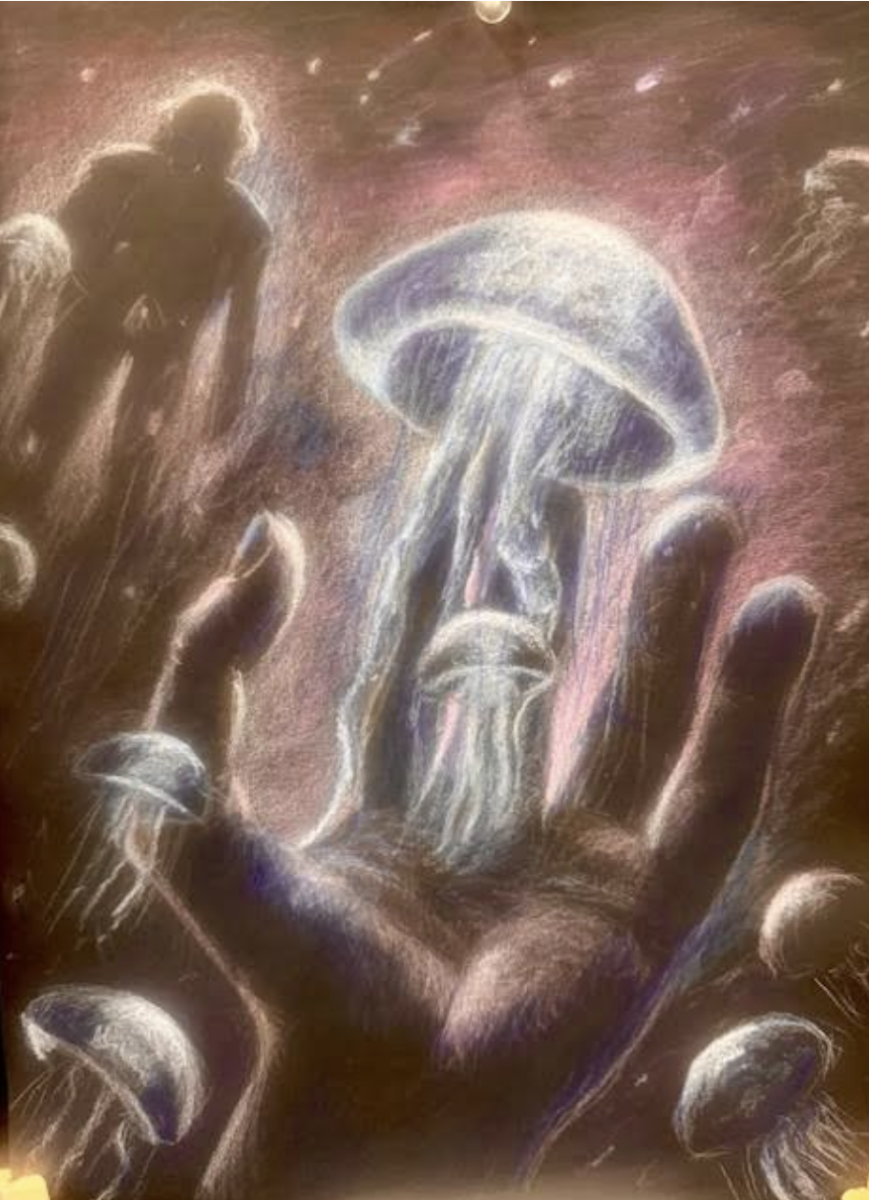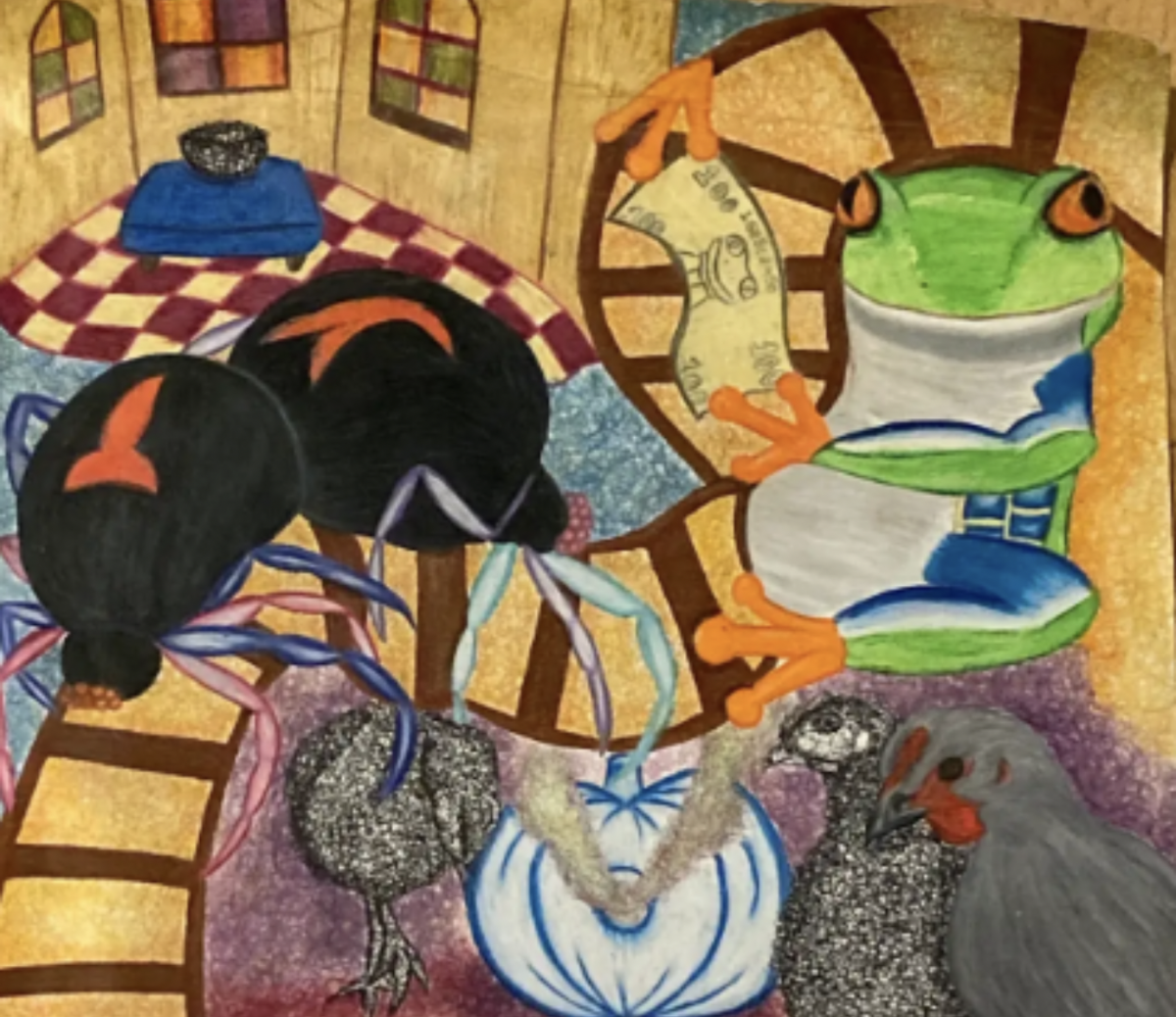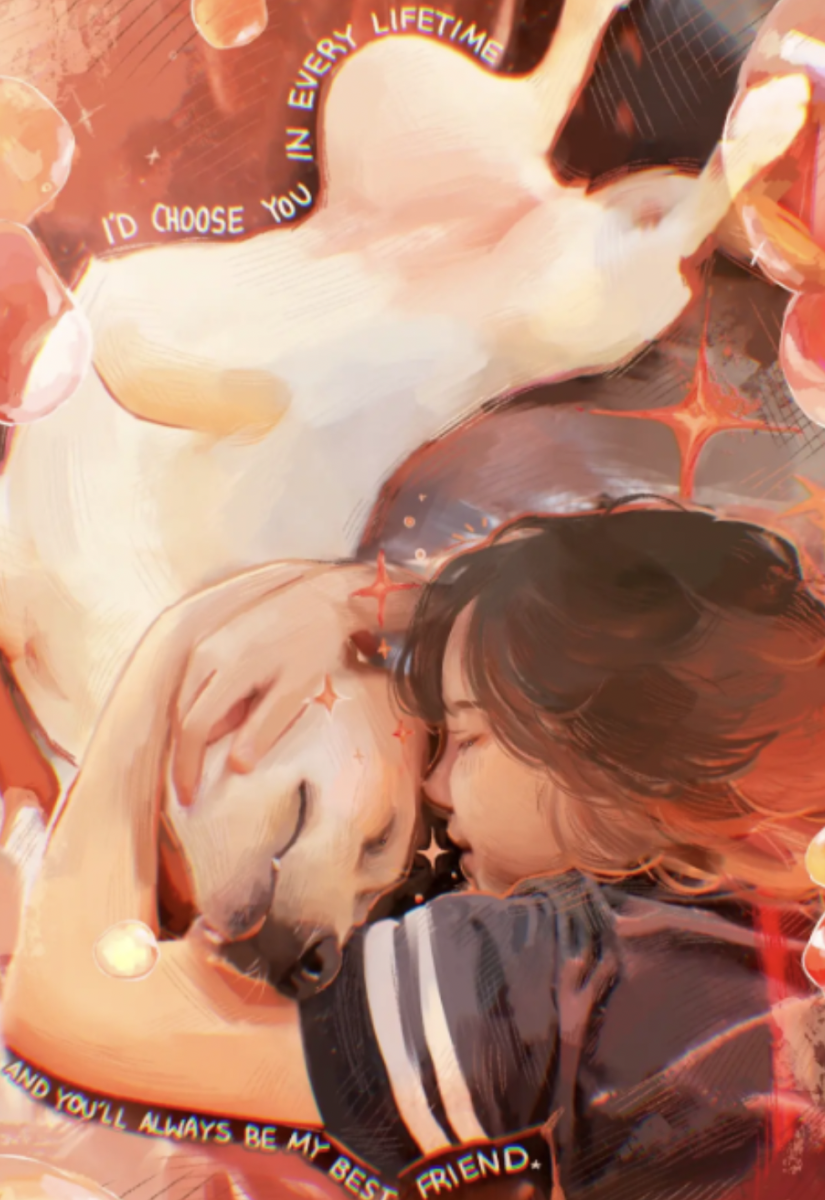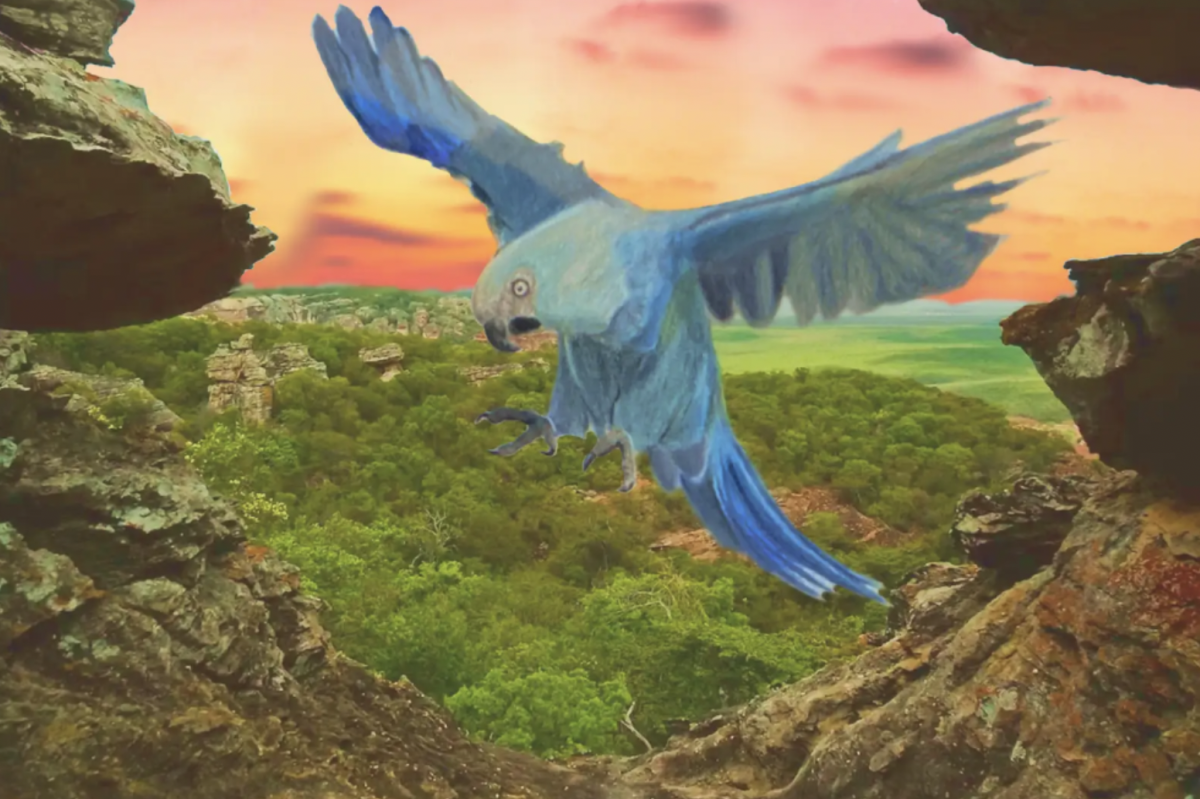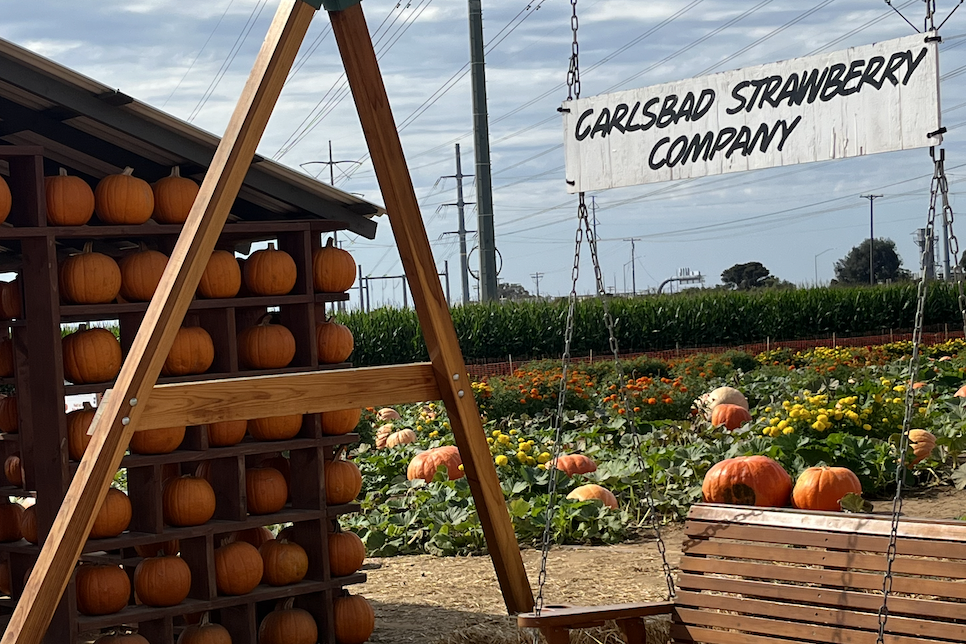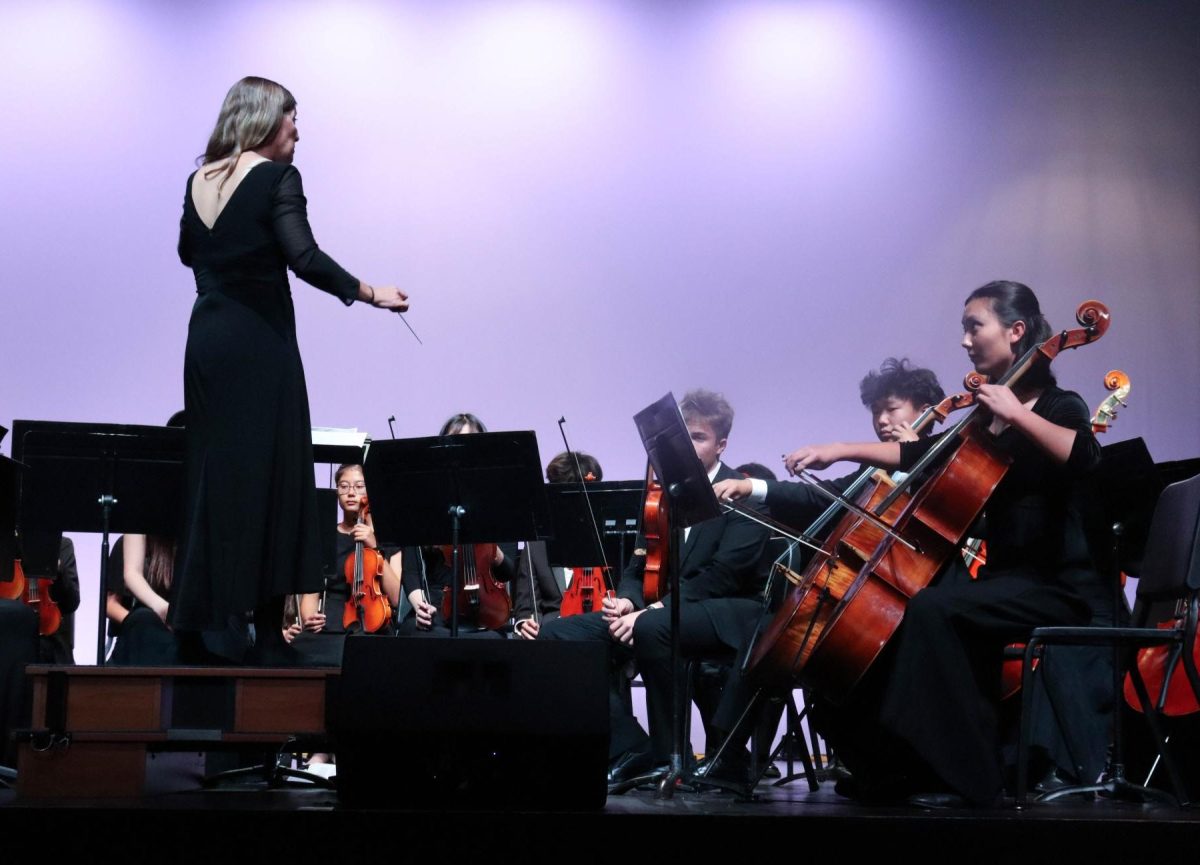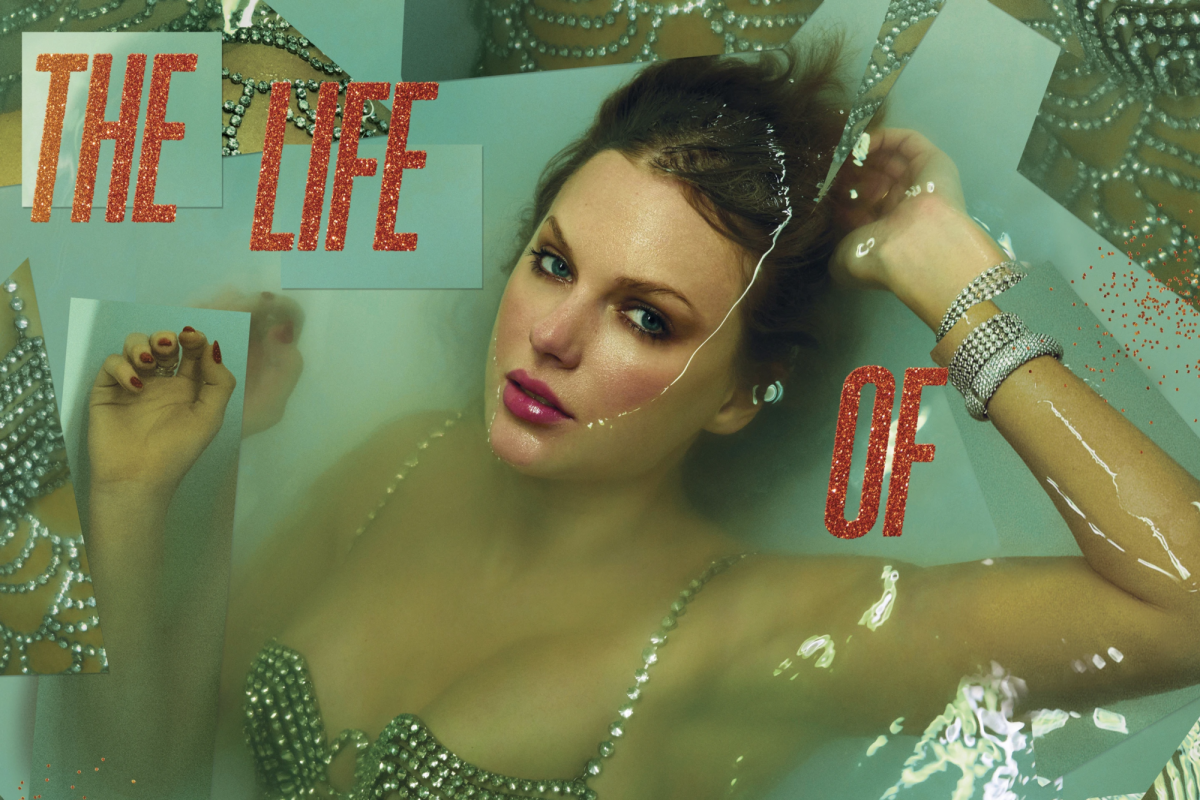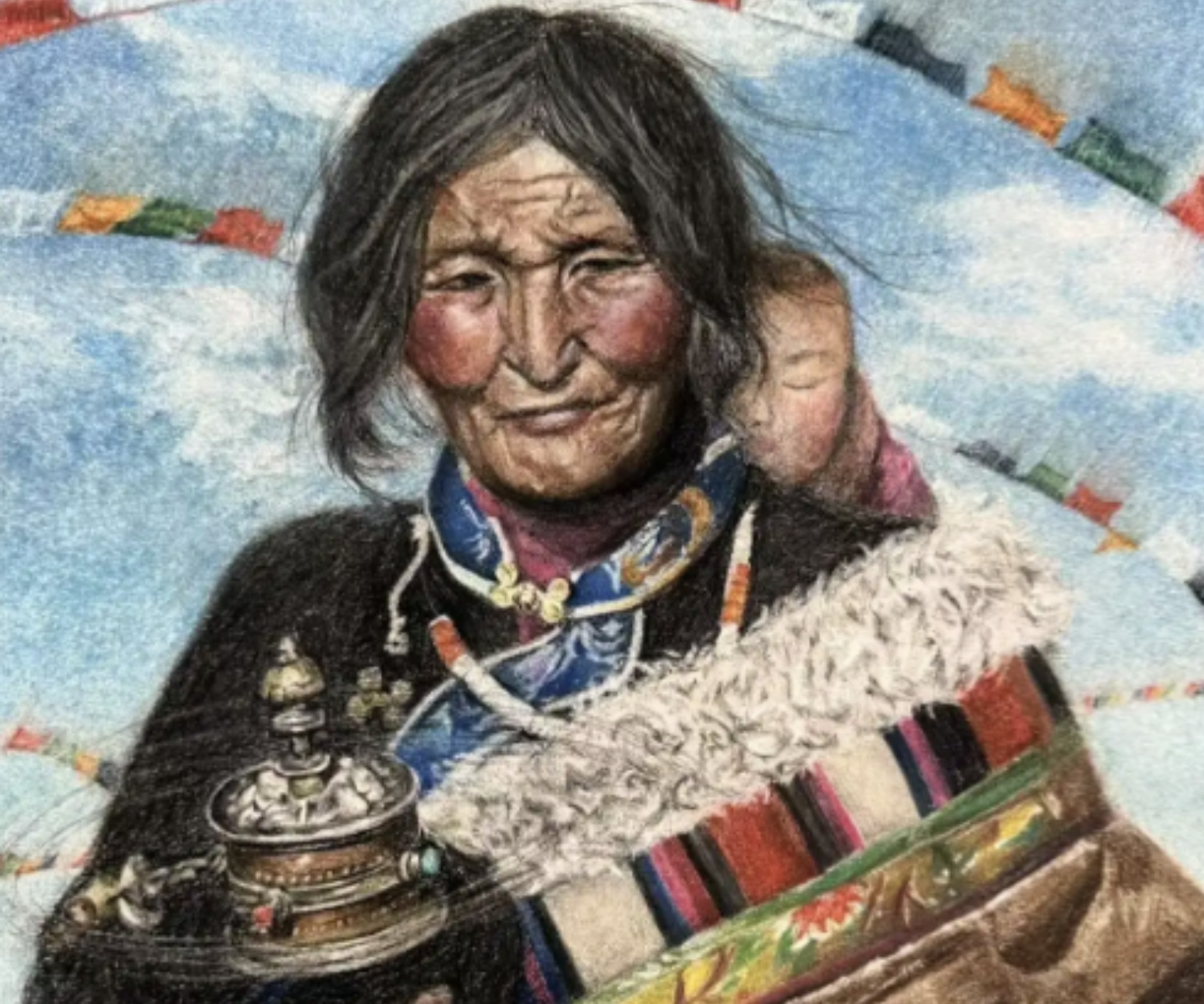
College Board offers a variety of advanced placement (AP) classes, from STEM to humanities topics, but the AP Studio Art courses — including 2-D Design, 3-D Design and Drawing — have fewer students taking it. At the school, only one period of the class is offered, which is taught by Katie O’Brien, the AP 2-D Art & Design and Drawing & Design teacher. By the end of the year, each student submits a portfolio of 29 original pieces. In one piece they created this year, titled “The Encounter,” students had free interpretation of the term.
After encountering an eye-catching horse shaped chandelier at the Trick Rider Restaurant in Frisco, Texas, Ryder Hurtado (12) was drawn to its beauty and uniqueness. Having never seen anything like it, Hurtado was struck by its unusual design, and captured the moment of surprise and fascination.
“My photo and drawing show different ways of experiencing an encounter: one through reality and one through interception,” Hurtado said.
Using Prismacolor colored pencils, a material that he is familiar with, the chandelier’s glow and bright colors contrast the surrounding environment, drawing the viewer’s gaze upward.
“The colors and composition shape the mood and focus, enhancing the emotional impact of that encounter,” Hurtado said.
Hurtado’s favorite parts of his piece are the people and beverages, as he was “unsure if it would be too hard for [him] to draw, but in the end it came out great.”
Jumbled hands of charcoal gray reach out towards the viewer. Adding eyes on the palms and lips on the fingers, Jaewon Jang (11) created a surreal charcoal piece representing the various prejudices and discriminations he encountered after immigrating to the United States.
“This represents different social expectations and pressure I had to experience in an earlier time of my life,” Jang said. “[My] unexpected encounter with American society inspired me to create this piece.”
A human figure, a representation of Jang himself, kneels at the bottom to symbolize vulnerability in the face of the social pressures of immigration. The formidable eyes and lips portray the alienating emotion Jang felt living in a “completely different society.”
Naming the piece “What Made Me,” Jang recognized how the hardships of being displaced to an unfamiliar cultural environment shaped his identity.
Ekaterina Karyakina’s (11) artwork transports viewers to a dreamlike space beyond humanity and into the “mysteries of the cosmos.” The outstretched hand reaching towards the jellyfish symbolizes human nature’s desire to connect with and explore the unknown. The distant astronaut adds another dimension, encountering the poignant moment as a quiet observer, which is a reminder of how people often admire beauty from a distance, longing to be part of it.
“I love the silhouette of the astronaut because it invites the viewer to imagine themselves in that position, floating in space, glimpsing something so delicate and colorful,” Karyakina said. “It’s a reminder that encounters don’t have to be dramatic or loud to be meaningful. Sometimes they are quiet, one moment of wonder that stays with you.”
Created with a myriad of colored pencils on black paper, Karyakina’s technique heightens the contrast between the softness of light and darkness. Each pencil stroke shapes the jellyfish, making it come alive with motion.
“My favorite thing about this piece is the glow,” Karyakina said. “The fact that the jellyfish appear to light themselves, softly radiating light onto the hand and surrounding darkness. That soft glow seems hopeful, as if there is always something to look forward to, however isolated or uncertain you are.”
Some say that dreams are a window to the soul; psychologists argue that dreams are encounters with our subconscious. Fluidly connecting a collection of seemingly unrelated items, creatures and settings, Albert Liang (10) created a surreal illustration of a dream he had.
“Recently, I had dreams that were very unique and memorable, which were showing train tracks of the 1900s, a school in the United Kingdom, and a large, football-sized frog on the train tracks,” Liang said. “I usually don’t try to remember my dreams as often, but this was definitely something I would remember, so I decided to share it in my artwork.”
Liang used both Prismacolor Colored Pencils and thin fineliner pen for a variety of unusual patterns and textures, all of which converge to make the piece feel “dreamy, liminal and full of wonder.”
“My overall favorite part of this project was the concept of telling a story through art,” Liang said. “The drawing had the format of a collage, made with abstract concepts, and had details that people may or may not notice. Making this art piece involved lots of sketching and experimenting, which was very fun and helped extend my art abilities.”
Elegantly mixing reds, pinks, yellows and other warm hues, Lana Smallwood (10) painted a piece of “child-like wonder” by portraying her life changing encounter of meeting her dog.
“My artwork is a homage to our puppy at home, Mel,” Smallwood said. “Having met her when I was only ten, I wanted to dedicate one of my pieces to her and one of our earliest memories together. Using a photo of us during our first months together as inspiration, I made this artwork to not only share our story, but also hoping that it would resonate with other pet owners as well.”
With the words, “I’d choose you in every lifetime, and you’ll always be my best friend” flowing organically to fit the piece’s composition, Smallwood emphasizes her love for Mel.
“The connections we have with our dogs, our affection for them and their love for us prevails over all the adversities the world may present to us,” Smallwood said.
Victoria Eduardo Duran’s (10) piece represents an encounter between the viewer and the extinct Spix Macaw, capturing a powerful moment of remembrance through a portrayal of the macaw in flight.
“The bright blue feathers of the Macaw contrast with the darker greens and browns of the land, making the whole piece feel both full of life and sad, like a memory of something that once existed,” Duran said. “The Macaw feels alive and full of energy, but its surroundings feel empty and lonely. It’s like the bird is flying through a world that can no longer sustain it, making the piece more emotional.”
Utilizing a mix of traditional mediums like Prismacolor colored pencil and digital art for the background, Duran hopes to show the “balance between nature and memory.” The macaw is the center of the piece, with viewers drawn to its bright colors contrasting with the background.
“My favorite part about the piece is how I blended traditional and digital art,” Eduardo Duran said. “The soft, detailed drawing of the Macaw brings warmth and life, while the digital setting gives it a sense of space and distance, capturing the feeling of something precious slipping away.”
Your donation will support the student journalists of Torrey Pines High School. Your contribution will allow us to purchase equipment and cover our annual website hosting costs.



